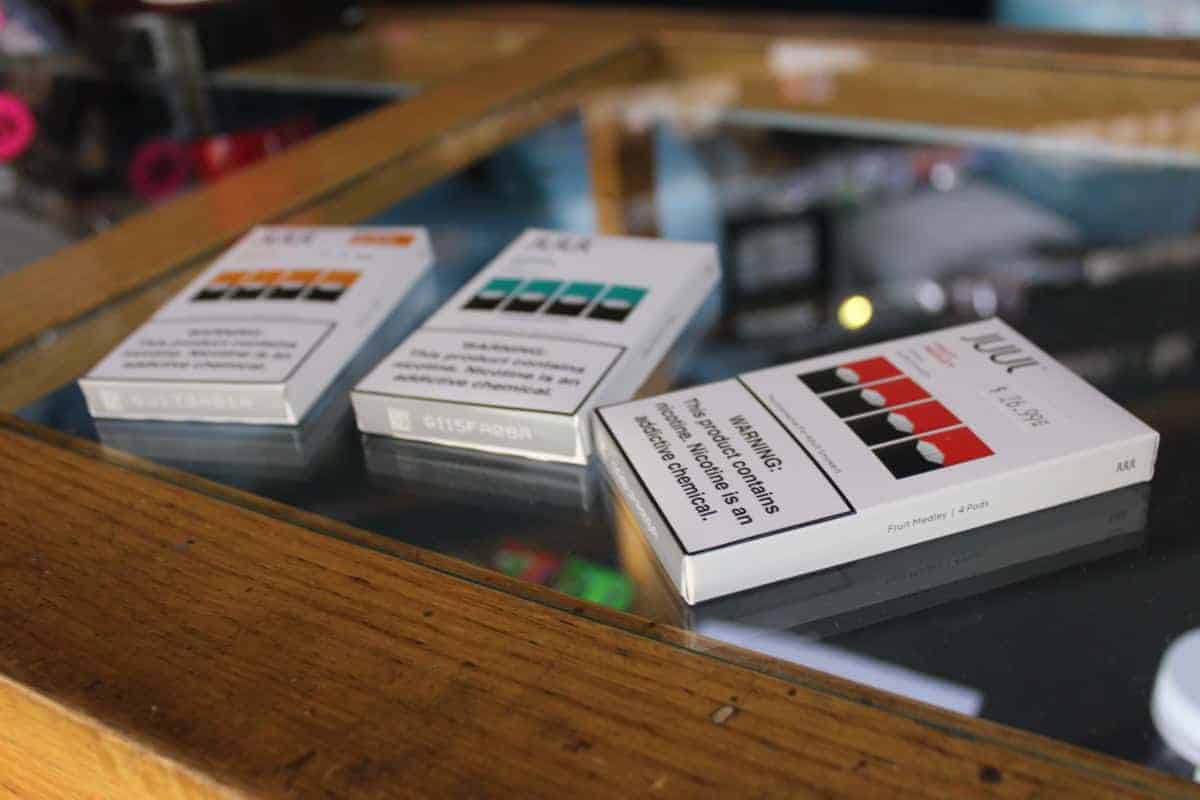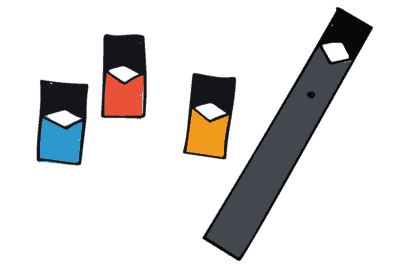Most Millennials remember anti-smoking campaigns in health education classes, but for the current generation of middle and high schoolers, there’s a new trend replacing traditional cigarettes — e-cigarettes. The e-cig market boomed this year, but with the products falling into the hands of minors and resulting in what the Food and Drug Administration termed an “epidemic” among youth, schools are on alert for students puffing on these easily concealed devices, particularly the sleek-designed Juuls.
This week, EducationNC is taking a look at Juuling, the now-popular name for vaping. So far in the series we’ve seen how a high school newspaper took on the issue of Juuling, examined the science behind Juuling, and today we continue our series with input from one significant demographic on the issue of students and vaping: our teachers.
From Nov. 15 to Dec. 10, 2018, Reach NC Voices (an initiative of EducationNC) surveyed teachers on student use of e-cigs. More than 1,400 North Carolina teachers responded to our survey (1,472 teachers to be exact) and left over 2,200 comments. The responses demonstrate that North Carolina is not immune to the nationwide trend of youth vaping. The majority of teachers who responded said they are concerned about students vaping, with 72 percent reporting a rise in e-cigarette use in recent years. And amidst an investigation into Juul Labs — the leader in the e-cigarette business — for marketing to youth, 76 percent of teachers said they believe vaping products are marketed to young people.
Public health concerns
Perhaps at the top of the list of vaping concerns for teachers are those related to student health — from nicotine content to the issue of students vaping other drugs.
Juul packaging, like many e-liquid products on the market, comes labeled with a nicotine warning that reads, “Warning: This product contains nicotine. Nicotine is an addictive chemical.” But Juul e-liquid cartridges also carry some of the highest nicotine levels on the market at up to 5 percent nicotine (they recently released a 3 percent nicotine pod). A Truth Initiative study reported that 63 percent of Juul users “don’t know that the product always contains nicotine.” As for the teachers in our survey, slightly over half of respondents felt students were aware of the nicotine presence in vaping products.
In addition, according to a school-based survey reported by the Associated Press, an estimated 2.1 million middle and high school students have vaped marijuana. When asked how concerned they were that students are vaping other drugs, the majority of teachers responded that they were very concerned. However, several teachers commented that they had no idea students could vape other substances.
“I honestly did not know that other drugs could be vaped. This knowledge considerably increases my concerns with students having access to and using vapes,” one teacher wrote.
Other teachers recognized the use of CBD (Cannabidiol) — which is legally sold to people over the age of 18, and is a derivative of the cannabis plant. (See more on some CBD product sales here.) Students may also, however, vape THC — which provides that marijuana high and is an illegal substance in North Carolina.
“We have had multiple students caught with liquid marijuana this year,” a teacher said, and though it’s not clear how many teachers may conflate CBD and THC, it is clear that neither should be in the hands of students under the age of 18 or on school drug and tobacco-free campuses.
When asked, “What are your biggest concerns when it comes to students vaping, if any,” some teachers responded that it was the issue of drug use through vapes. “I am most concerned that the students are using more harmful drugs in the devices and the effects could be unpredictable,” a teacher said. Others commented that they believed the devices would serve as gateways to more harmful substances, including traditional cigarettes.
Addiction also ranked as a primary concern. “Students do not realize the long-term health effects of vaping, thinking it is harmless. They also do not realize it is addictive,” a teacher wrote. Another commented that their biggest concern is “another generation addicted to nicotine.”
Health education and intervention
Although teachers shared public health concerns, one of the most surprising results of the survey related to the topic of health education and intervention. When asked, “Has your school implemented any health education efforts to inform students about vaping?,” 57 percent of teachers said that their schools had not.
“Our school hasn’t done anything [despite] teacher concerns and the amount of students [that] have been turned in for doing it,” one teacher commented.
Fourteen percent of teachers said their schools have implemented health education around vaping and shared some steps on intervention. “Our school has just recently started a public service announcement during our afternoon announcements,” one respondent said. “We have had school health workers, substance abuse counselors, and school resource officers meet with our middle school students to share facts and answer questions about vaping,” said another.
One teacher noted the issue may not be the lack of health education alone, but it may be the timing of providing health education interventions as well. “I am concerned that if we wait until middle school to educate on the harmful practice of vaping and what to look for, we will have missed the influential period of elementary school. These young children see these devices used everyday at ballparks, stores, home, and while riding in the car,” the teacher commented.
And while kids may be seeing vapes everywhere, for awhile teachers didn’t notice.
Juul Labs released their nicotine-delivery vape in 2015 as a smoking cessation tool, but in recent years, the product has gained popularity among youth. When Juuls first became popular among minors, students could trick teachers into thinking the devices were USB drives because of the resemblance, and many teachers simply didn’t know the difference. With a rise in e-cigarette use and the topic in the news, teachers are more aware of e-cigarette products. But when we asked teachers if their school had informed them how to handle the issue of students vaping, responses were divided:
Since school campuses are tobacco-free campuses (which includes vapes), we also asked teachers if their school explained disciplinary efforts about vaping to students. Teacher responses again were split:
On these intervention questions, our data analyst mapped out responses to see if there were any regional trends. For example, we were interested in knowing if schools that already implemented health education programs on vaping were concentrated in particular areas. Our data shows that this is not the case:
Overall, teacher responses demonstrated strong concern for the public health consequences of the new trend of vaping, while also demonstrating gaps in health education, intervention, and disciplinary measures. We were able to use these responses to plan stories and follow up on leads, like sensitive public health issues and content ideas. Our upcoming articles in the series work to directly address concerns and to share stories drawn from teacher experiences.
Editor’s note: This article has been updated to distinguish between CBD and THC.






